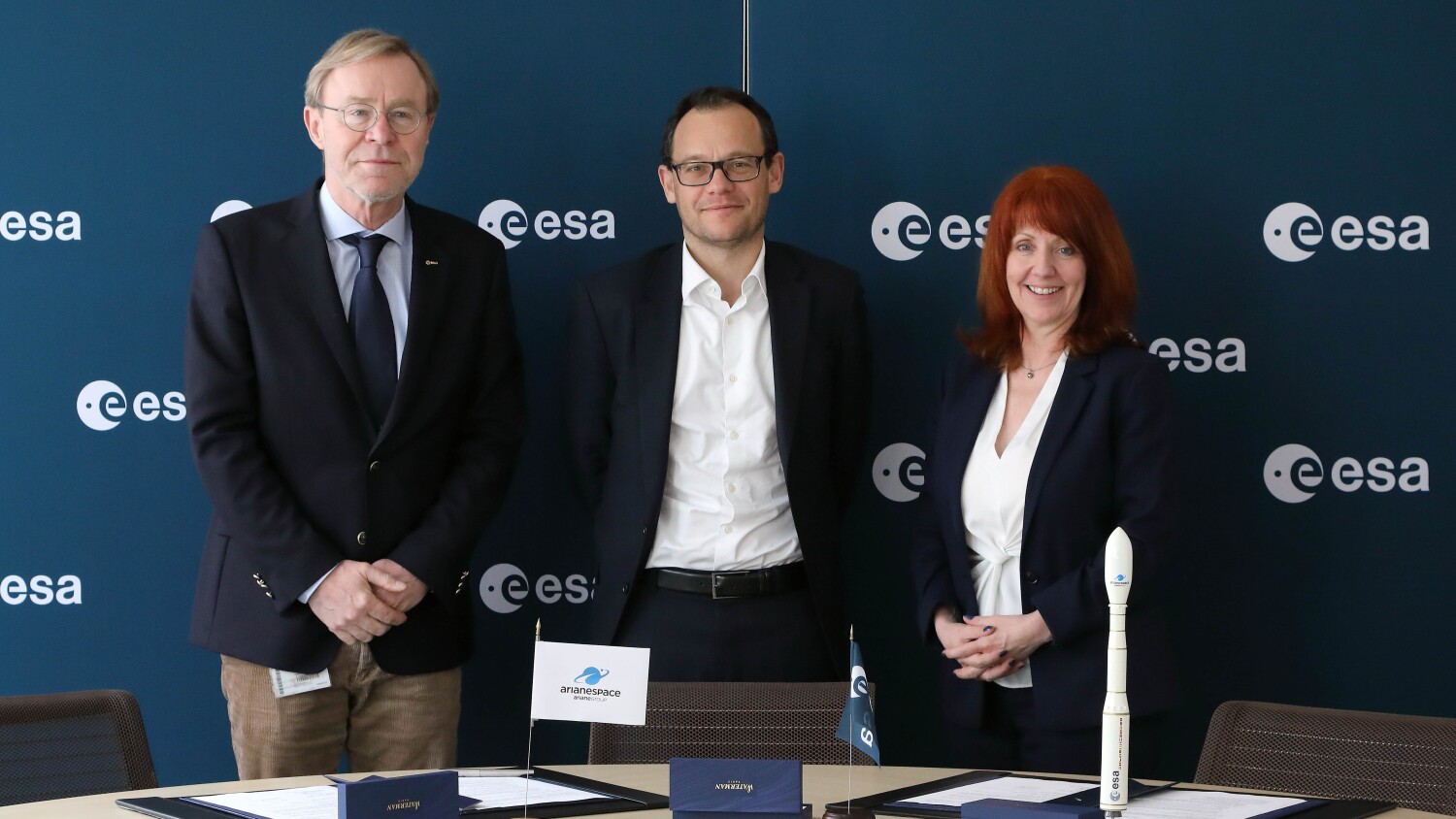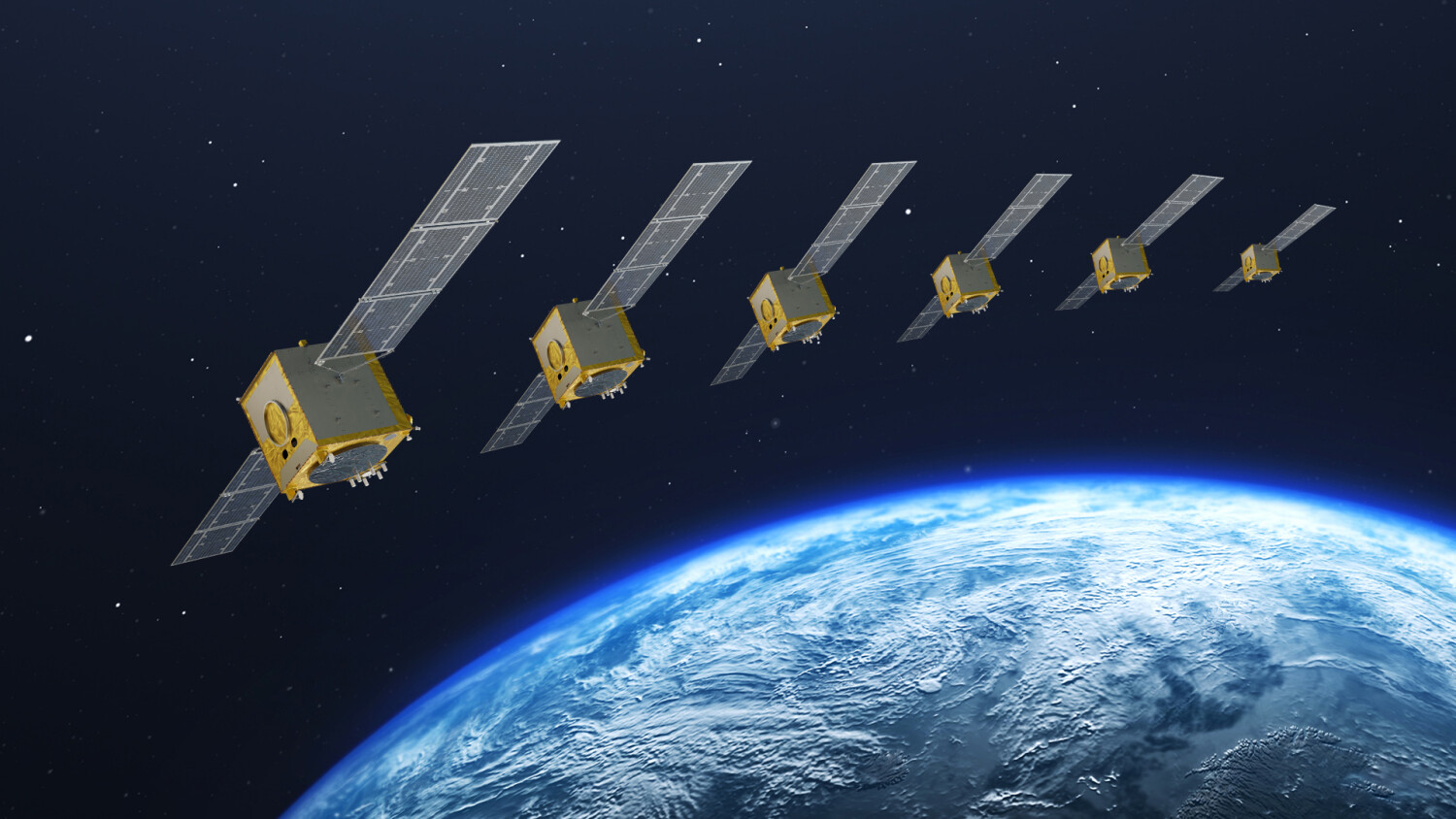Arianespace confirmed its position as the world’s leading launch Service & Solutions company in 2008, and is actively gearing up for 2009 with its expanded family of launchers.
2008: focus on Ariane
Since being founded in 1980, Arianespace has signed over 300 launch Service & Solutions contracts and launched 265 satellites for 70 customers – more than half of all commercial satellites now in service worldwide.
Arianespace continued its sustained launch rate in 2008, with one Soyuz and six Ariane 5 launches, boosting more than 70 metric tons of payload into orbit. With 28 successful launches in a row, Ariane 5 confirmed its technical maturity. It launched the Jules Verne ATV (Automated Transfer Vehicle) to the International Space Station last year, and also launched ten geostationary satellites, fully half of all those launched worldwide. In just 12 months, from August 2007 to August 2008, Arianespace carried out nine Ariane 5 launches, clearly illustrating its operational capabilities. The company logged approximately 950 million euros in consolidated sales for the year, and it should reach break-even or better for the sixth year in a row.
Results were just as impressive in terms of orders. Winning 13 contracts out of a total of 18 open to competition, Arianespace clearly confirmed its world leadership. Furthermore, Arianespace was chosen to launch the entire Galileo constellation. As of January 1, 2009, Arianespace had a record backlog of orders, including 27 geostationary satellites, plus launches into other orbits: eight by Ariane 5 and seven by Soyuz. These figures do not include Galileo launches.
Impact of the crisis
The global financial crisis limited the number of new contracts available in 2008. Only 18 new launch contracts were signed last year, versus 25 in 2007, as launch capacity exceeded market demand.
Furthermore, the average weight of satellites decreased. Out of the 13 contracts signed by Arianespace in 2008, seven were for “3 ton” class satellites, and there was a limited number of satellites in the “6 ton” class.
The tight credit situation had varying effects. Several new operators froze their projects, but the largest operators were unaffected. They are pursuing their development, which underpins a solid replacement market.
2009: focus on the expanded family
Arianespace will cope with these new conditions by calling on an expanded family of launch vehicles.
Six to eight Ariane 5 launches are slated this year, including the Herschel-Planck and Terrestar-1 missions. In addition, Soyuz will be launched for the first time from the Guiana Space Center, enabling Arianespace to carry out eight Soyuz missions by the end of 2010, from either French Guiana or Baikonur. The development of the Vega light launcher will be completed in 2009, leading to a commercial service entry in 2010.
This expanded launcher family gives Arianespace greater agility in meeting its customers’ evolving needs. Arianespace will continue to maintain its world leadership by offering the widest range of launch possibilities and calling on its proven capabilities, including 28 successful launches in a row of Ariane 5 and 21 of Soyuz, plus a solid commitment to successful, timely launch services.







